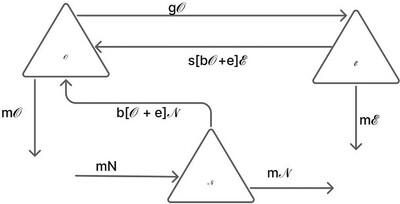A Fractional-Order Mathematical Model for Obesity Dynamics: Analysis Via Hermite Wavelets and Comparative Numerical Methods
IF 2.9
4区 工程技术
Q1 MULTIDISCIPLINARY SCIENCES
引用次数: 0
Abstract
The dynamics of obesity are addressed in this study by formulating a fractional-order non-linear system that models the time-dependent behavior of three population groups: never obese, obese, and exobese people. Obesity has become one of the most significant global public health challenges, with its prevalence increasing steadily across all age groups due to factors such as lifestyle changes, urbanization, and dietary patterns. In this work, real-world data from Brunei Darussalam, covering the years 1990 to 2022, are incorporated to study obesity dynamics more realistically. In this article, the Hermite wavelet technique is employed as a numerical technique to solve the proposed system and analyze the time-dependent behavior of each group. To evaluate the accuracy of the Hermite wavelet method, its solutions are compared with the Runge-Kutta technique, a traditional fourth-order approach. The Adams-Bashforth-Moulton technique is compared with RK-4 to assess accuracy through absolute error analysis. Sensitivity analysis is also performed to investigate the influence of key model parameters on the system's behavior. Graphical and 3D visualizations illustrate the evolution of the population groups over time. Furthermore, a comprehensive theoretical framework is provided, including convergence, and verifying that the solution exists, is unique, and remains bounded.

肥胖症动力学的分数阶数学模型:基于Hermite小波和比较数值方法的分析
本研究通过建立一个分数阶非线性系统来解决肥胖的动力学问题,该系统模拟了三种人群的时间依赖性行为:从不肥胖、肥胖和过度肥胖。肥胖已成为全球最重大的公共卫生挑战之一,由于生活方式改变、城市化和饮食模式等因素,其患病率在所有年龄组中稳步上升。在这项工作中,来自文莱达鲁萨兰国的真实数据,涵盖1990年至2022年,被纳入更现实地研究肥胖动态。在本文中,采用Hermite小波技术作为数值技术来求解所提出的系统,并分析每组的时间依赖行为。为了评估Hermite小波方法的精度,将其解与传统的四阶方法龙格-库塔方法进行了比较。将Adams-Bashforth-Moulton技术与RK-4技术进行比较,通过绝对误差分析来评估准确性。本文还进行了敏感性分析,以研究关键模型参数对系统行为的影响。图形和3D可视化说明了人口群体随时间的演变。此外,提供了一个全面的理论框架,包括收敛性,以及验证解的存在性,唯一性和保持有界性。
本文章由计算机程序翻译,如有差异,请以英文原文为准。
求助全文
约1分钟内获得全文
求助全文
来源期刊

Advanced Theory and Simulations
Multidisciplinary-Multidisciplinary
CiteScore
5.50
自引率
3.00%
发文量
221
期刊介绍:
Advanced Theory and Simulations is an interdisciplinary, international, English-language journal that publishes high-quality scientific results focusing on the development and application of theoretical methods, modeling and simulation approaches in all natural science and medicine areas, including:
materials, chemistry, condensed matter physics
engineering, energy
life science, biology, medicine
atmospheric/environmental science, climate science
planetary science, astronomy, cosmology
method development, numerical methods, statistics
 求助内容:
求助内容: 应助结果提醒方式:
应助结果提醒方式:


